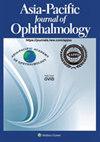屈光手术后白内障手术:成功的原则。
IF 4.5
3区 医学
Q1 OPHTHALMOLOGY
引用次数: 0
摘要
随着有角膜屈光手术史的白内障患者数量的不断增加,了解如何适当地管理他们的手术结果是必要的。由于角膜光学特性的改变,人工晶状体(IOL)度数计算的可预测性降低,以及更高的视力期望,这些病例非常复杂。这篇综述概述了优化屈光精度和患者满意度的关键原则。主题包括术前角膜成像解释,当前IOL功率计算策略(包括现代公式和射线追踪软件),散光管理,以及基于像差的IOL选择。我们还评估了老花眼矫正人工晶状体的作用,包括光可调、三焦、扩展聚焦深度和小光圈选择。通过综合最近的证据和专家建议,本综述为外科医生在屈光后白内障手术中获得成功的结果提供了实用的指导。本文章由计算机程序翻译,如有差异,请以英文原文为准。
Cataract surgery following refractive surgery: Principles for success
As the number of cataract patients with a history of corneal refractive surgery continues to rise, it is necessary to understand how to appropriately manage their surgical outcomes. These cases are uniquely complex due to altered corneal optical properties, reduced predictability in intraocular lens (IOL) power calculations, and higher visual expectations. This review outlines key principles for optimizing refractive accuracy and patient satisfaction in this population. Topics include preoperative corneal imaging interpretation, current IOL power calculation strategies (including modern formulas and ray tracing software), management of astigmatism, and IOL selection based on aberration profile. We also evaluate the role of presbyopia-correcting IOLs, including light-adjustable, trifocal, extended depth of focus, and small-aperture options. Through a comprehensive synthesis of recent evidence and expert recommendations, this review provides practical guidance for surgeons to achieve successful outcomes of cataract surgery in post-refractive eyes.
求助全文
通过发布文献求助,成功后即可免费获取论文全文。
去求助
来源期刊

Asia-Pacific Journal of Ophthalmology
OPHTHALMOLOGY-
CiteScore
8.10
自引率
18.20%
发文量
197
审稿时长
6 weeks
期刊介绍:
The Asia-Pacific Journal of Ophthalmology, a bimonthly, peer-reviewed online scientific publication, is an official publication of the Asia-Pacific Academy of Ophthalmology (APAO), a supranational organization which is committed to research, training, learning, publication and knowledge and skill transfers in ophthalmology and visual sciences. The Asia-Pacific Journal of Ophthalmology welcomes review articles on currently hot topics, original, previously unpublished manuscripts describing clinical investigations, clinical observations and clinically relevant laboratory investigations, as well as .perspectives containing personal viewpoints on topics with broad interests. Editorials are published by invitation only. Case reports are generally not considered. The Asia-Pacific Journal of Ophthalmology covers 16 subspecialties and is freely circulated among individual members of the APAO’s member societies, which amounts to a potential readership of over 50,000.
 求助内容:
求助内容: 应助结果提醒方式:
应助结果提醒方式:


